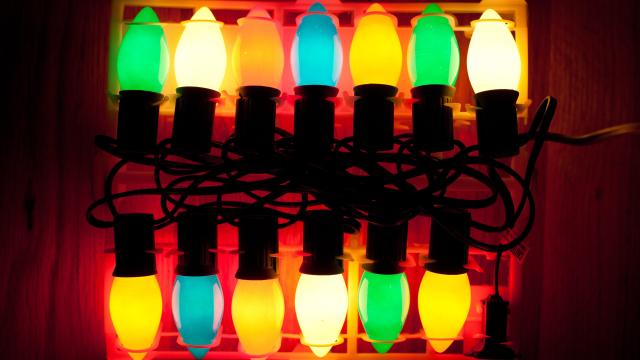Whether multicoloured or classic white, a few strands of holiday lights can make pretty much anything look festive, both indoors and outdoors. And while the strings of small bulbs have a longstanding reputation of being annoying and difficult to work with — which can sometimes lead to accidents — they also carry other safety risks. Here’s how to enjoy Christmas lights without anyone or anything getting hurt.
Christmas light safety tips
Christmas lights may look harmless — with their cheerful colours and twinkling modes — but don’t forget that you’re still dealing with glass and electricity, and accidents can happen. Here are a few ways to avoid them:
Carefully inspect strands from previous years
If you’re reusing holiday lights from previous years — which you should if you have them — be gentle when you take them out of storage. Before putting them up, take the time to do a quick check of each strand, making sure there aren’t any broken bulbs, frayed (or bare) wires, loose connections, or anything else that looks potentially dangerous. When in doubt, replace the strand.
Don’t use indoor lights outside
Remember our friends at Underwriters Laboratories (UL)? They’ve been testing holiday lights for roughly a century, so first of all, look for the UL mark when purchasing new ones.
But even if you have a tub of multiple strands of lights all tangled together, and their original boxes are long gone, the UL mark on the tag will still tell you whether they meet the safety requirements for indoor use only, or both indoor or outdoor use.
A green UL mark on the tag or near the plug means that the lights have been evaluated for indoor use only, while the red UL mark means that the lights are safe to use both indoors and outdoors.
Christmas lights made for indoor use may not be able to withstand precipitation, extreme temperatures, or water exposure, so avoiding using those outside.
Opt for LEDs, if possible
Buying new Christmas lights this year? Go for ones using LED bulbs, if they’re available. Not only do they cost less to operate than traditional bulbs, but because they don’t use as much energy, it also makes it safer to connect multiple strands together. Plus, LED bulbs don’t get as hot as the incandescent variety, so they’re less likely to cause a fire.
Don’t leave them on overnight
Energy costs aside, some experts recommend turning your Christmas lights off at night before going to bed, or putting them on a timer that switches them off automatically. Even though LED bulbs aren’t prone to overheating, it’s still a good idea to check the label on the lights to see whether the bulbs and wattage can handle long periods of illumination.

Leave a Reply
You must be logged in to post a comment.